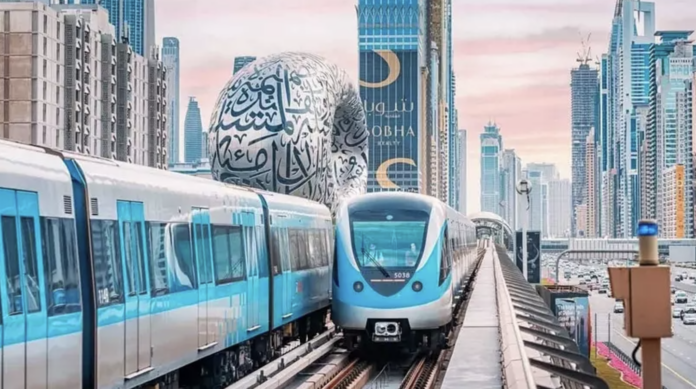В Дубае были реализованы меры по предотвращению затопления инфраструктуры и станций метро. В Управлении дорог и транспорта (RTA) подчеркнули, что установка защитных барьеров и устранение всех выявленных проблемных зон позволит не допустить повторения апрельских затоплений ни на существующих Красной и Зеленой линиях, ни на будущей Синей линии, которая будет введена в эксплуатацию в сентябре 2029 года.
Весной рекордные дожди и последовавшее за ними наводнение по всей стране привели к закрытию станций Onpassive, Equiti, Mashreq и Energy на несколько недель, а жители были вынуждены прибегнуть к альтернативным видам транспорта.
В Управлении дорог и транспорта объясняют, что наводнение произошло не из-за несовершенного проектирования метро; а из-за беспрецедентного количества осадков – 250 мм менее чем за 24 часа.
«Некоторые станции метро расположены в низинных районах, что делало их особенно уязвимыми. Однако теперь мы знаем о тех областях, где мы столкнулись с проблемами, и если произойдет подобная ситуация, затопление определенно будет предотвращено».
Чиновник из RTA подчеркнул, что после наводнения правительство Дубая выделило 1,5 млрд дирхамов муниципалитету и RTA для решения проблемы в 14 пострадавших местах.
Также 20,5 млрд дирхамов были выделены на новый транспортный проект и направлены на решение проблем, связанных с изменением климата, включая сильные дожди и наводнения, которые не только нарушают работу транспортных сетей, но и увеличивают расходы на техническое обслуживание.
Более 90% работ уже завершено, благодаря этим мерам дороги, метро и общественная инфраструктура Дубая станут более устойчивыми, а уровень безопасности и удобства жителей и гостей эмирата повысится.
Dubai has implemented measures to prevent flooding of infrastructure and metro stations. The Department of Roads and Transport (RTA) stressed that the installation of protective barriers and the elimination of all identified problem areas will prevent a repeat of the April floods either on the existing Red and Green lines, or on the future Blue Line, which will be commissioned in September 2029.
In the spring, record rains and subsequent flooding across the country led to the closure of Onpassive, Equiti, Mashreq and Energy stations for several weeks, and residents were forced to resort to alternative modes of transport.
The Department of Roads and Transport explains that the flooding was not due to an imperfect design of the subway; but due to an unprecedented amount of precipitation – 250 mm in less than 24 hours.
“Some metro stations are located in low-lying areas, which made them particularly vulnerable. However, we are now aware of the areas where we have encountered problems, and if a similar situation occurs, flooding will definitely be prevented.”
An official from the RTA emphasized that after the flood, the Dubai government allocated 1.5 billion dirhams to the municipality and the RTA to address the problem in 14 affected locations.
In addition, 20.5 billion dirhams were allocated for a new transport project and aimed at solving problems related to climate change, including heavy rains and floods, which not only disrupt transport networks, but also increase maintenance costs.
More than 90% of the work has already been completed, thanks to these measures, Dubai’s roads, metro and public infrastructure will become more sustainable, and the level of safety and convenience of residents and guests of the emirate will increase.
Источники: RUSSIAN EMIRATES / Khaleej Times
